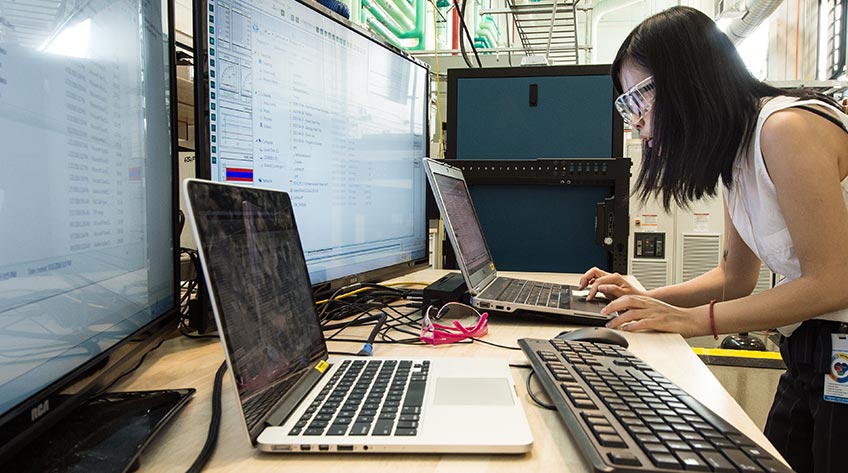Fei Ding: Helping Power System Industries Do the Real Work of Grid Resilience and Reliability

Fei Ding is an electrical engineering researcher at the National Renewable Energy Laboratory (NREL) who publishes a substantial number of reports and articles about her work on grid resilience and reliability.
Since beginning her career in NREL’s Power Systems Engineering Center (PSEC) in 2015, Ding has coauthored 59 publications on integrating renewable energy into the grid. In 2020 alone, she has so far published research on grid resilience during extreme weather events and other disruptions, dynamic restoration strategies for distribution strategies, a hierarchical control framework to manage behind-the-meter distributed energy resources (DERs) for grid regulation, and evaluation of a DER management system through hardware-in-the-loop simulation. Ding took some time to talk with us about her work in grid resilience and reliability.
How did your interest in renewable energy lead you to NREL?
I first met NREL folks at a conference when I was a Ph.D. student, and NREL’s focus on renewable energy and grid integration matched my own research. Even before graduation, I considered NREL to be my ideal workplace. Being here has allowed me to continue my work on renewable grid integration into the power distribution system.
Tell me more about your work in PSEC.
I’ve done a lot of work in distribution management, which considers the high penetration of solar photovoltaics (PV) and other renewable energy resources in the grid. My current research focuses on how to improve grid operations with the use of grid-edge resources. I am currently working on and leading projects to develop new approaches to enhance grid resilience and reliability.
What are some of the new approaches?
Previously, when power systems engineers developed approaches for grid operation and planning, they didn’t take distributed energy resources (DERs) into consideration because very few DERs existed. But now, with high penetration of PV, controllable loads, and batteries, the grid can be controlled in a different way. For example, we can convert a traditional, centralized operation into multiple, flexible distributed operations with grid-edge intelligent resources. This is what we are trying to develop—fully leveraging these small, dispersed resources at the grid edge to maximize grid operation flexibility. This work can help grid and system operators design more flexible and resilient approaches to achieve a stronger grid.
Over the past five years, we have demonstrated these approaches by collaborating with a lot of utilities to demonstrate our technologies, like San Diego Gas & Electric, Arizona Public Service Electric, Southern Company, and Xcel Energy and Holy Cross Energy in Colorado.
Where do you see your research heading in the future?
I have two goals: (1) developing cutting-edge solutions for better grid operations and (2) advancing technologies that are practically applicable. This means that I want to collaborate with more stakeholders, including industry partners and utilities, to demonstrate and validate our approach, so our research work can really help the real work of renewable energy in the new power system.
Even though environmental problems in Asia and the U.S. are big issues, as the renewables market matures, the costs of solar power and batteries are getting lower. More and more people recognize the benefits of adopting these technologies in their homes. All this will encourage utilities and system operators to adopt these DERs, too. This is the future.
Outside of NREL, which do you like better: Skiing or hiking?
Skiing!
Last Updated May 28, 2025
